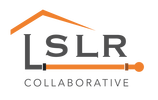Scoping
|
|
How will you define your community?
Regardless of the geographic scope, the community affected by LSLs and their replacement also includes property owners and tenants, whether or not the tenant is the customer of record on the water bill. Asking those affected about how they define their community can provide insights about their concerns and possible communication channels for outreach.
If a community is defined as the service area of a local water utility that crosses geographic or political borders, this may necessitate coordination across those boundaries and consideration of relevant differences in policies and regulatory authorities, particularly those related to funding. Challenges may occur not only because of differences in existing leadership and practices but also because of differences in local demographics (e.g., typical income levels, home ownership trends, school age population, etc.). These differences can lead to challenges including households’ ability to pay and, consequently, disproportionate impacts. |
What is your baseline in terms of the number of households and properties that have LSLs?
The number of affected households and other properties, such as child care centers, schools, and restaurants, in the community will affect the scope and overall cost of the initiative.
Learn more about how to conduct an inventory of lead service lines.
Learn more about how to conduct an inventory of lead service lines.
|
Continue to:
Identifying Partners |


